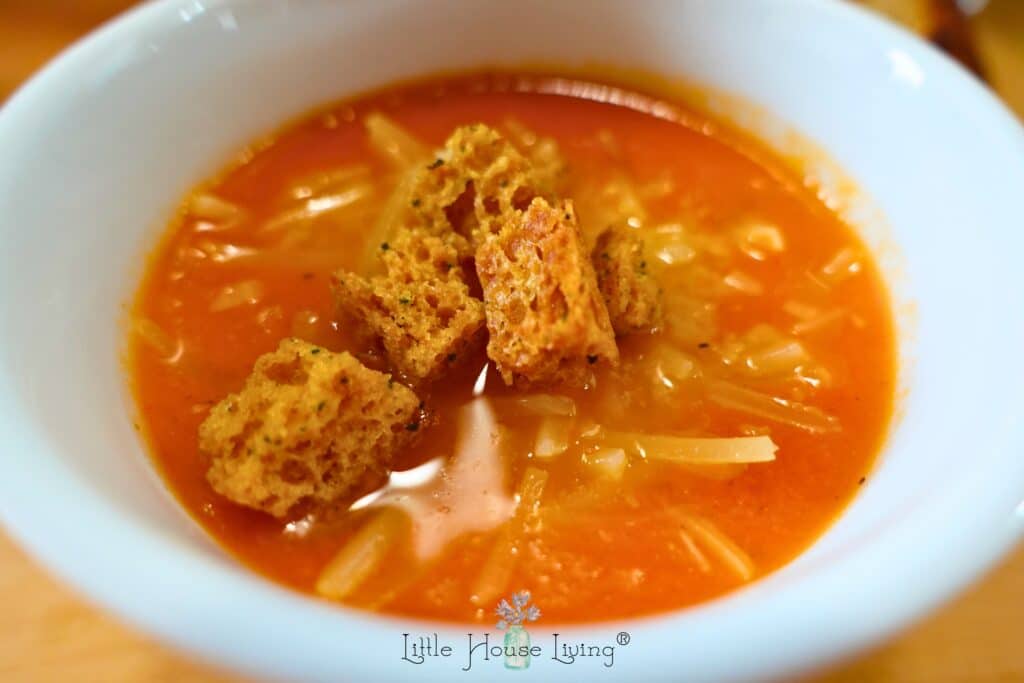The Ultimate Guide to Budget-Friendly Groceries (Free Printable List)
This post may contain affiliate links. Read our disclosure policy here.
Discover the grocery store’s hidden gems: unbelievably cheap items that are nutritious, delicious, and budget-friendly. Let’s dive into the details to shop smarter and not harder!

Times have been tough lately on everyone’s wallet, especially when it comes to groceries. The USDA has done studies that show that between 2018 and 2022, groceries have gone up over 20%.
If your budget was already tight before, this price increase has been extra difficult for you over the past few years.
Today, we are going to talk about cheap groceries: how to find them, how to make a cheap grocery list, and how to lower your grocery bill. I even have a free printable for you down at the bottom of this post. And don’t worry, it’s not all about ramen (which isn’t even on my list!).
I created this list of foods based on my last decade and a half of shopping at dozens of grocery stores in dozens of states all over the US and with help from the Little House Living community.
Disclaimer: some of the things on this list might be things you wouldn’t buy. The point of this list is not to be the “healthiest foods” but the cheapest foods. There’s no shame in buying what you can afford.
Let’s dive into the world of cheap food together!

How to Find Cheap Groceries
There are many ways to find cheap groceries at your local store, no matter where you live! Here are the basics. Click the links below for more detailed info.
- Plan Ahead: Create a meal plan for the week and make a shopping list based on it. This helps avoid impulse buys and ensures you purchase only what you need. Learn about meal planning here.
- Compare Prices: Use store flyers or online apps to compare prices at different stores in your area. Some stores may have better deals on certain items.
- Buy Store Brands: Store brands are often cheaper than national brands and are similar in quality. Don’t hesitate to give them a try.
- Look for Sales and Discounts: Take advantage of sales, especially for non-perishable or freezable items. Also, check for clearance items or products close to their expiration date that are marked down.
- Use Coupons and Loyalty Programs: Coupons, either from flyers or digital, can save a lot of money. Also, many stores offer loyalty programs that provide discounts and rewards.
- Buy in Bulk: For non-perishable items, buying in bulk can be cheaper. But be cautious – it’s only a saving if you use all of it before it goes bad. Here’s Everything You Need to Know About Buying in Bulk.
- Shop Seasonally: Produce that is in season is often cheaper and fresher. Also, consider visiting local farmer’s markets for potential deals on fresh produce. See more: Seasonal Menu Planning – How to Do It and Why.
- Avoid Pre-Packaged Items: Pre-cut, pre-washed, and pre-packaged items usually cost more. Opt for whole produce and do the prep work yourself.
- Shop at Discount Stores: Discount grocery stores often offer lower prices than mainstream supermarkets. Here’s a Guide to Getting a Deal at Discount Grocery Stores.
- Limit Convenience Foods: Items like pre-made meals or snacks tend to be more expensive. Cooking from scratch can be cheaper and healthier. Learn to Make Your Own Convenience Foods here.
- Check Different Store Sections: Sometimes, the same item can be priced differently in another section. For example, cheese in the deli section might be cheaper than in the dairy aisle.
- Consider Frozen or Canned Alternatives: Frozen and canned fruits and vegetables can be cheaper than fresh ones, especially if the fresh produce is out of season.
- Don’t Shop Hungry: Shopping on an empty stomach can lead to unnecessary and often more expensive purchases.
- Review Your Receipts: Keep track of what you’re spending and adjust your shopping habits as needed.
- Get Groceries for Free: Find out how to get groceries for free.
Tip: Find more tips here: 12 Simple Ways to Save on Groceries

Cheapest Foods at the Grocery Store
Alright, let’s talk budget shopping! My go-to strategy for keeping the purse strings tight and the pantry full is based on finding foods that don’t break the bank. Ever notice how some items are just perpetually cheap? Those are the staples on which you can always base your grocery list and build out your meals when you are on a tight budget.
- Rice: Rice can be anything from a stir-fry sidekick to the star of a pudding. It’s even cheaper when you buy it in bulk. I buy white rice because it lasts the longest.
- Beans: Kidney, black, pinto – you name it, beans pack a protein punch while pinching pennies. Dried and canned beans are a staple in my pantry at all times.
- Pasta: From spaghetti to macaroni, pasta’s versatility is matched only by its affordability. Toss it with just about anything for an instant hit. Plus it’s kid-friendliness is wonderful for those with kids.
- Frozen veggies: Frozen veggies are some of the most nutrient-dense vegetables in the grocery store since they are frozen at peak ripeness. They are often the cheapest as well.
- Eggs: Breakfast, lunch, or dinner; unless we are having a crazy egg shortage like we had a few years back, these are a safe bet for cheap protein.
- Canned tomatoes: A powerhouse for sauces, stews, and soups, they’re a staple that can be used in many ways.
- Potatoes: Bake them, mash them, put them in a stew – the possibilities are endless with the basic potato.
- Bananas: Bananas are one of the few fruits I will always allow on my budget grocery list. They are good for snacking and for baking.

Which Grocery Stores Have the Cheapest Groceries
Unfortunately, we don’t all have access to all of the cheapest grocery stores. But in case you do have access to any of these, they are typically the cheapest places to buy groceries. Some of these grocery stores I’ve found to be the cheapest through my own experience and others were recommended by other Little House Living budget shoppers.
- Aldi: Known for its cost-cutting strategies, Aldi offers low prices on items like baking supplies, fresh produce, chocolate, cheese, and canned goods.
- Market Basket: A New England chain, Market Basket offers good value and savings on local products and high turnover items.
- WinCo Foods: WinCo Foods offers wholesale prices and significant savings, especially on bulk pantry items and produce.
- Lidl: Similar to Aldi (owned by the same company), Lidl offers a variety of affordable groceries, including a bakery.
- Trader Joe’s: Known for its private-label products, Trader Joe’s offers competitive prices on snacks, specialty items, and frozen or prepared foods.
- Walmart: Walmart offers significant savings due to its large buying power, especially for families who shop here regularly.
- Sam’s Club: Owned by Walmart, Sam’s Club offers lower prices on bulk purchases, benefiting from Walmart’s buying power.
- Costco: Although it requires a membership fee, Costco members often find that the savings on bulk purchases outweigh the cost of membership, especially for large families. Costco differs from Sam’s Club with the amount of organic foods they have available.
Tip: If you prefer to shop online Azure Standard is one of the cheapest places for groceries (in bulk) that I can find. I have a Beginner’s Guide to Azure Standard here with ideas on how to scoop out the best deals.

The Cheapest Vegetables and Fruits
This list of the cheapest fruits and vegetables is based on price per pound. Some will be more expensive in certain areas and at different times of the year. But in general, this is a good list to start with.
- Cabbage
- Potatoes
- Oranges
- Bananas
- Celery
- Apples
- Honeydew Melons
- Cucumbers
- Watermelon
- Cauliflower
- Carrots
- Onions
- Green Bell Peppers
- Zucchini
- Spinach
- Broccoli
- Sweet Potatoes
- Cauliflower (whole heads)
- Lettuce
- Kale

The Cheapest Foods in the Dairy Aisle
In general, store-brand or generic-brand dairy products will be the cheapest. Dairy products have become very expensive to buy, almost more expensive than meat! But if you need foods from the dairy aisle for your meal plans, here are the cheapest you can get.
- Generic brand milk
- Store-brand yogurt
- Bulk cheddar cheese
- Generic cream cheese
- Store-brand sour cream
- Cottage cheese
- Butter (store-brand or on sale)
- Generic or store-brand eggs
- Bulk mozzarella cheese

The Cheapest Foods in the Frozen Section
I’m not saying that all of these foods are the healthiest, but they are the cheapest foods you can find in the frozen foods aisle to help your grocery budget. If you want and have the time, you can make many of these grocery staples from scratch.
- Frozen mixed vegetables
- Frozen spinach
- Frozen broccoli
- Frozen peas
- Frozen corn
- Store-brand frozen pizza
- Frozen fruit (mixed berries, mangoes)
- Frozen french fries or tater tots
- Frozen fish sticks
- Generic frozen waffles or pancakes
- Frozen chicken nuggets
- Frozen burritos
- Frozen meatballs
- Store-brand ice cream
- Frozen garlic bread
More Cheap Foods at the Grocery Store
Here are some more foods that don’t fit into the categories above but that should be on your cheap groceries list.
- Generic bread
- Frozen vegetables
- Peanut butter
- Canned tuna
- Tortillas

The Cheapest Meat Cuts at the Grocery Store
I wasn’t sure about including meats on this list because they just aren’t very cheap! But many of us enjoy eating meat in some form, and so it inevitably goes on our grocery lists. When you are on a strict budget, you won’t be buying cuts like boneless chicken thighs and breasts, but there are alternatives if you get creative!
- Chicken drumsticks
- Ground turkey
- Pork shoulder (or pork butt)
- Chicken thighs (bone-in)
- Ground beef (higher fat content)
- Pork chops (bone-in)
- Turkey drumsticks
- Chicken wings
- Pork spareribs
- Beef liver
- Pork belly
- Beef brisket (point cut)
- Pork hocks

The Cheapest Pantry Staples
Oh, the magic of a well-stocked pantry! Trust me, keeping those shelves lined with the right staples is one of the best things you can do as a home cook. Here are the pantry staples that are my go-to for affordable feasts.
- Dried beans and lentils: These little gems are a must for any budget shopper – they bulk up any dish and aff tons of protein without breaking the bank.
- Rice and pasta: There are endless possibilities with these staples – from stir-fries to Italian nights. These carbs are cheap and serve as a canvas for whatever leftovers you’ve got lingering in your fridge. I like buying white rice instead of brown rice because it has a long shelf life. Noodles are always a good thing to stock up on because kids love them!
- Oats: These have been a frugal staple for a long time. They can stretch meat, make breakfast, make frugal desserts, and more!
- Flour, sugar, and other baking essentials: Believe it or not, making treats from scratch is usually much cheaper — and more rewarding — than snagging them off the shelf.
- Canned goods: Tomatoes, corn, peas, and even prepared beans can be some of the cheapest items you can find for canned goods. Most cost less that $1 per can.
- Spices: If you find the right deal, spices can be an excellent way to add a LOT to your meals without spending much. Here’s how Spices Save Money. Salt, black pepper, dried garlic powder, minced onion, ginger, and turmeric are my favorites.
It’s important to embrace the art of bulk buying where it makes sense. Oftentimes, the price of groceries goes down when you are buying in a larger quantity. You can get my Ultimate Guide to Buying in Bulk here. It’s a strategy seasoned with practicality and a pinch of foresight, and it’s served me well through feast and famine.
Tip: Need even more ideas? Here’s How to Build a Basic Frugal Staples Pantry.
Grocery Shopping List of the Cheapest Groceries
Want to be able to print out a list of all of these goodies so that you have it the next time you are at the store? Grab a copy below!

Meal Ideas You Can Make With Cheap Groceries
Did you finally make it to the end of this post, and now you need some meal ideas that you can make with all of the ingredients you bought or are planning to buy? Here are some of my favorite budget recipes.
- The Cheapest Meals to Make on an Incredibly Tight Budget
- Eating Cheap From the Pantry
- 14 Cheap Meals to Make When You’re At The End Of Your Budget
- Frugal Ground Beef Recipes to Stretch the Budget
- Leftover Pot Roast Recipes – How to Stretch a Roast
- How to Make Perfect Oatmeal – Add In Ideas!
- Frugal Tomato Soup with Canned Tomatoes

Merissa Alink
Merissa has been blogging about and living the simple and frugal life on Little House Living since 2009 and has internationally published 2 books on the topic. You can read about Merissa’s journey from penniless to freedom on the About Page. You can send her a message any time from the Contact Page.
This article with the Cheap Grocery List was originally posted on Little House Living in January 2024.



You did so much work for these lists – thanks!
Something to try is finding out if there is a community-sponsored or other small scale farm near you, and asking if you can exchange volunteer work for produce. There is one in our region and it has a store. In addition to selling, they also provide groceries to those with reduced incomes, even for some who cannot afford groceries. Because of their kindness and community awareness, grocery stores and markets in the area will often send their overstock. Sometimes this includes “seconds”, and all of that is given for no charge to anyone who comes into the store. Anyway, the owner will give volunteers $40 in groceries plus any donated items they want in exchange for 4 hours of work. The volunteer work includes packing orders, sorting, helping in the store, and tidying up. I’ve volunteered there for only a few weeks so far this winter, but I think volunteering in the other seasons might include outside help. It’s great to be able to give back to the community and the groceries are an added bonus.
In Wisconsin, we have a chain of convenience/gas stores – Kwik Trip. They are 100% dedicated to sustainability (they recycle to manufacture their own milk jugs! They grow/process grain and bake all of their in-house bread, etc. It’s pretty incredible!). They sell (every day) potatoes/onions/bananas at $.49/lb. When there is a surplus, that drops to $.38 and even $.25/lb!!! Their in-house breads are ALL under $2/lb, including 8-grain, multi-grain, oat-bran, etc. They also have rotational sales: butter 2 lbs for $5, $2.49/bacon, $.68/loaf of bread, and meats: 5 oz bacon-wrapped pork fillets right now are $.99/each. This rotates with $.99 petite 5 oz beef fillets, 5 oz boneless pork chops, etc. When the various items are on sale, is when I stock up!! Then, over the next few months, I can meal plan. Even shopping at Dollar Tree: that’s my pasta shop because, at $1.25, the pasta they sell is actually 1.25 lbs!! Between DT, KT, Walmart and Aldi, I make the rounds (they are all literally within the same 1/4 mile, so I’m not traveling to do it! It feels good to always feed my family at the lowest possible food cost, per pound!